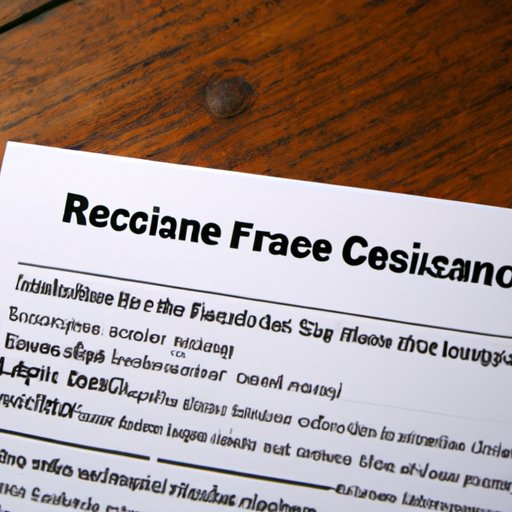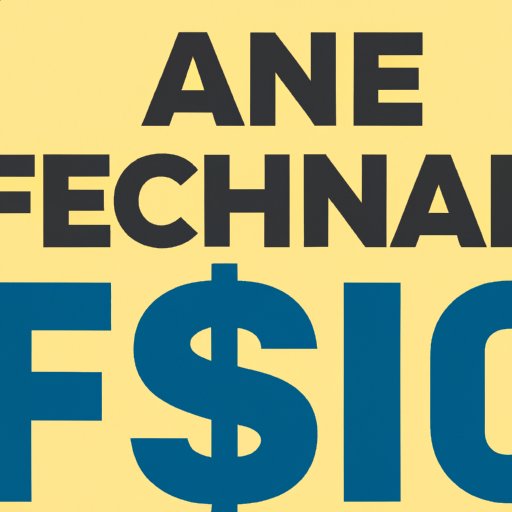Introduction: Explaining the Basics of a Cash Out Refinance
A cash out refinance is a popular financing option that allows homeowners to access the equity they have built up in their homes. By taking out a larger mortgage than what is currently owed on a property, homeowners can use the additional funds to pay off other debts or make improvements to their homes. It is important for homeowners to understand the basics of a cash out refinance before making any decisions.
A. Definition of a Cash Out Refinance
A cash out refinance is a type of mortgage loan where a borrower takes out a larger amount of money than what is currently owed on their property. The difference between the new loan amount and the existing loan balance is then paid out to the borrower in cash. This cash can be used for any purpose, such as paying off debt, making home improvements, investing in stocks or bonds, or even taking a vacation.
B. Benefits of a Cash Out Refinance
The primary benefit of a cash out refinance is that it allows homeowners to access the equity they have built up in their homes without needing to sell or take out a home equity loan or line of credit. In addition, cash out refinances often come with lower interest rates than other loan types, which can help save money over the life of the loan. Finally, cash out refinances can be used to consolidate multiple loans into one, potentially reducing monthly payments and overall debt.
Comparing a Cash Out Refinance to Other Refinancing Options
A. Traditional Refinance
One common alternative to a cash out refinance is a traditional refinance. A traditional refinance replaces an existing loan with a new one at a lower interest rate. This typically reduces monthly payments, but no additional funds are given to the borrower. Traditional refinances are best suited for borrowers who want to reduce their monthly payments, but do not need additional funds.
B. Home Equity Loan or Line of Credit
Another option for accessing the equity in a home is a home equity loan or line of credit. With these loan types, a lender will provide a lump sum of money to the borrower, and the loan must be repaid over time. Home equity loans and lines of credit typically have higher interest rates than a cash out refinance, but the funds can be used for a variety of different purposes. Additionally, the repayment terms are usually flexible, allowing borrowers to customize their loan to meet their needs.
C. Reverse Mortgage
Finally, a reverse mortgage is another way to access the equity in a home. With a reverse mortgage, a lender provides the borrower with a lump sum of money that does not need to be repaid until the borrower moves out of the home or passes away. This loan type can be beneficial for older homeowners who need additional funds but do not want to take on additional debt. However, it is important to note that reverse mortgages often come with high fees and interest rates, so they should only be considered if other financing options are not available.
Determining if a Cash Out Refinance is Right for You

A. Evaluating Your Financial Situation
The first step in determining if a cash out refinance is right for you is to evaluate your financial situation. Consider your current income, expenses, and debts to determine if you can afford the additional monthly payments associated with a cash out refinance. Additionally, consider your long-term financial goals and decide if the extra funds from a cash out refinance could help you reach those goals.
B. Assessing Your Property Value and Loan-to-Value Ratio
It is also important to assess your home’s value and your loan-to-value (LTV) ratio before applying for a cash out refinance. Your LTV ratio is the amount you owe on your home compared to its appraised value. Generally speaking, lenders prefer an LTV ratio of 80% or less, so if your LTV ratio is higher than that, you may need to consider other financing options.

Understanding the Benefits and Risks of a Cash Out Refinance
A. Benefits
The primary benefit of a cash out refinance is that it allows homeowners to access the equity they have built up in their homes without needing to sell or take out a home equity loan or line of credit. Additionally, cash out refinances often come with lower interest rates than other loan types, which can help save money over the life of the loan. Finally, cash out refinances can be used to consolidate multiple loans into one, potentially reducing monthly payments and overall debt.
B. Risks
Despite the potential benefits, there are some risks associated with a cash out refinance. First, if the value of your home decreases after you take out the loan, you could be stuck owing more than your home is worth. Additionally, since cash out refinances involve taking out a larger loan, they come with higher monthly payments and more interest paid over the life of the loan. Finally, if you fail to make your payments, you could risk losing your home.

Evaluating the Financial Impact of a Cash Out Refinance
A. Calculating Your Break-Even Point
Before deciding to move forward with a cash out refinance, it is important to calculate your break-even point. To do this, add up all of the closing costs and fees associated with the loan and divide that number by your monthly savings. The resulting number is the number of months it will take for you to recoup the costs of the loan.

B. Considering Closing Costs and Fees
When evaluating the financial impact of a cash out refinance, it is important to factor in closing costs and fees. These can include appraisal fees, origination fees, title insurance fees, and more. Depending on the lender and the loan amount, these costs can add up quickly, so it is important to compare offers from multiple lenders to ensure you are getting the best deal.
Conclusion
A cash out refinance can be a great way for homeowners to access the equity in their homes and use it for a variety of purposes. However, it is important to carefully consider the benefits and risks associated with this type of loan before making any decisions. Additionally, homeowners should evaluate their financial situation, assess their property value, and calculate their break-even point to ensure that a cash out refinance is the right choice for them.
(Note: Is this article not meeting your expectations? Do you have knowledge or insights to share? Unlock new opportunities and expand your reach by joining our authors team. Click Registration to join us and share your expertise with our readers.)
